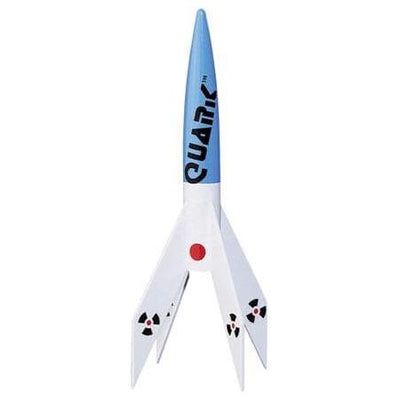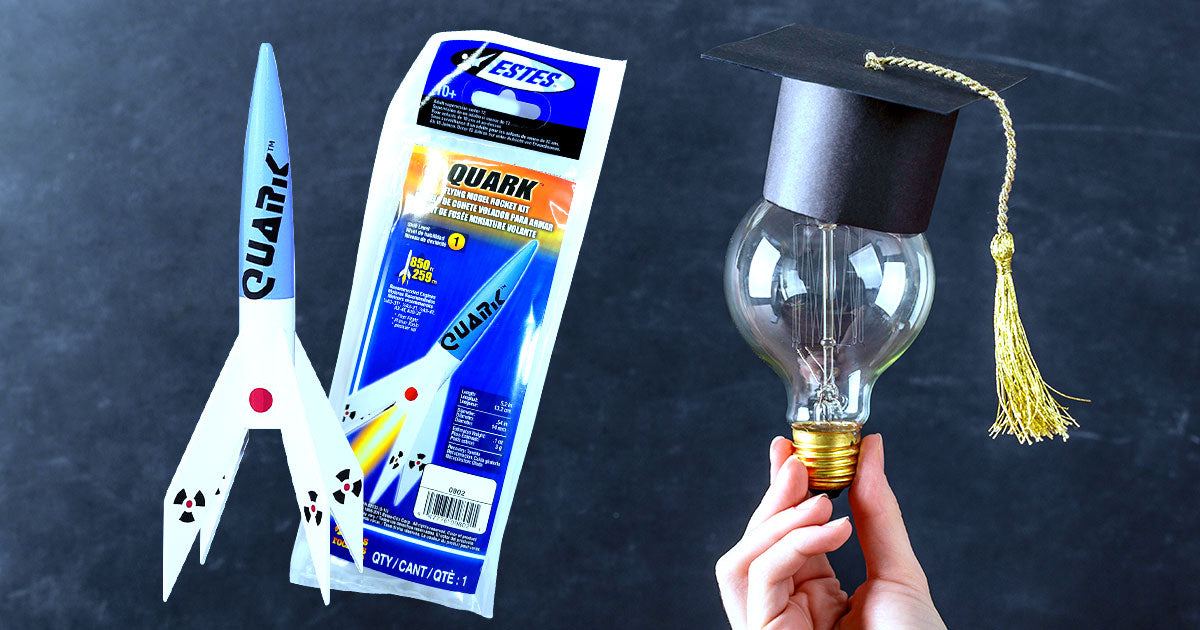Rocket Science for Beginners: Educational Rocket Kits
Ignite curiosity and launch into STEM learning with hands-on rocket building
Educational rocket kits offer an exciting gateway into the captivating world of space exploration and physics. These beginner-friendly sets provide a perfect blend of hands-on learning and scientific discovery, making them ideal for budding engineers, curious students, and hobbyists alike.
| Key Takeaways: Rocket Science for Beginners | |
|---|---|
| Educational Value | Hands-on STEM learning, physics principles, engineering skills |
| Skill Levels | Suitable for beginners to advanced enthusiasts |
| Key Features | Customisable designs, various engine sizes, altitude tracking |
| Popular Brands | Estes, NASA Education, Apogee Rockets |
| Safety Considerations | Proper assembly, launch area preparation, following guidelines |
Introduction to Rocket Kits
Educational rocket kits serve as an exciting gateway to the fascinating world of aerospace engineering and physics. These hands-on learning tools offer an accessible introduction to rocket science, catering to enthusiasts of all ages. Renowned brands like Estes have developed comprehensive kits that make complex concepts approachable, allowing beginners to explore propulsion, thrust, and aerodynamics through practical experimentation.
Whether you're an educator seeking to inspire your students or a parent looking to spark scientific curiosity in your children, these kits provide an engaging platform for STEM learning. By combining theoretical knowledge with hands-on experience, rocket kits create an immersive educational environment that's both fun and informative.
Types of Rocket Kits
The world of educational rocket kits offers a diverse range of options to suit various skill levels and learning objectives. Here's a breakdown of the different types available:
- Beginner Kits: Perfect for newcomers, these kits, such as those found in our Rocket Collection, typically include pre-assembled components and simple designs for easy construction and launching.
- Intermediate Kits: These offer more complex designs and customisation options, allowing users to experiment with different configurations and engine sizes.
- Advanced Kits: Tailored for experienced rocketeers, these kits often feature multi-stage rockets and advanced materials, providing a greater challenge and higher performance capabilities.
For those just starting their rocketry journey, the Estes Rocket Science Starter Set is an excellent choice. It provides all the necessary components for a successful first launch, including a rocket body, engine, and launch pad.
Pro Tip:
As you gain experience, consider experimenting with different engine sizes or adding features like an altitude tracker to enhance your rocketry experience and gather more data from each launch.
How Rockets Work
Understanding the basic principles of rocket propulsion is key to appreciating the educational value of these kits. Rockets operate on the fundamental principle of Newton's Third Law of Motion: "For every action, there is an equal and opposite reaction." When a rocket engine ignites, it expels gas downward with tremendous force, creating an equal and opposite reaction that propels the rocket upward.
Most educational rocket kits use solid fuel engines, where the size of the engine determines the thrust and potential altitude of the rocket. For instance:
- Smaller engines like the 1/2A6-2 produce shorter, lower-altitude flights
- Larger engines such as the C6-7 provide higher thrust, resulting in greater altitudes and longer flight times
By experimenting with different engine sizes, students can observe and analyse the relationship between thrust, weight, and flight performance, reinforcing key concepts in physics and engineering.

An Estes rocket kit, showcasing the components of a typical educational rocket
Launching Your First Rocket
The process of launching a rocket is an exhilarating experience that requires careful preparation and adherence to safety guidelines. Here's a step-by-step guide to ensure a successful and safe launch:
- Assembly: Carefully follow the instructions provided in your kit to assemble your rocket correctly. Most kits from Estes come with clear, beginner-friendly guidelines.
- Choose a Launch Site: Select an open area free from obstacles, ensuring compliance with local regulations and safety standards.
- Set Up the Launch Pad: Position your launch pad on level ground, ensuring stability for a straight ascent.
- Install the Engine: Carefully insert the rocket engine according to the kit's instructions.
- Prepare for Launch: Insert the igniter into the engine and connect it to your launch controller.
- Safety Check: Ensure all spectators are at a safe distance before initiating the countdown.
- Launch: Press the launch button and watch your rocket soar into the sky!
For a more comprehensive analysis of your rocket's performance, consider using tools like the Mini AltiTrak. This device allows you to measure the rocket's maximum altitude, providing valuable data for future launches and experiments.
STEM Learning Benefits
Educational rocket kits offer a wealth of learning opportunities across various STEM disciplines:
- Physics: Explore concepts such as Newton's laws of motion, aerodynamics, and gravitation
- Engineering: Gain hands-on experience in design, construction, and problem-solving
- Mathematics: Apply mathematical concepts in calculating flight trajectories and analysing performance data
- Technology: Learn about propulsion systems and the role of technology in space exploration
By engaging with rocket kits, students develop critical thinking skills, enhance their understanding of scientific principles, and foster a passion for innovation and discovery.
"The excitement of rocketry captures students' imaginations, making complex scientific concepts more accessible and memorable. It's a powerful tool for inspiring the next generation of scientists and engineers." - Dr. Jane Smith, Aerospace Education Specialist
Notable Educational Rocket Kits
Several standout kits have gained recognition for their comprehensive approach to teaching STEM principles:
- Rocket Stability Kit by Estes Education: This kit allows students to explore concepts of centre of gravity and centre of pressure, crucial for understanding rocket stability and flight dynamics.
- NASA Beginner's Guide to Rockets: While not a physical kit, this comprehensive resource provides invaluable information for educators and students alike, covering everything from simple stomp rockets to advanced model rockets.
- Apogee Rockets Educational Resources: Offering a range of lesson plans and projects, Apogee Rockets provides educators with tools to create engaging, curriculum-aligned rocketry experiences.
These kits and resources not only teach the principles of rocketry but also inspire students to delve deeper into the fascinating world of aerospace engineering and space exploration.
Impact on Student Learning
Research has consistently shown that hands-on experiences with model rocketry significantly enhance students' understanding and retention of scientific concepts. Key benefits include:
- Improved quantitative reasoning skills
- Enhanced understanding of physics principles
- Increased interest in STEM careers
- Development of problem-solving and critical thinking abilities
By engaging in rocket-building projects, students gain practical insights into mission design, planetary exploration, and the challenges faced by real-world aerospace engineers. This experiential learning approach fosters a deeper, more lasting connection to STEM subjects, potentially inspiring future careers in science and technology fields.
Frequently Asked Questions
What are rocket kits?
Rocket kits are educational packages that contain all the necessary components to build and launch a model rocket. They typically include a rocket body, engine, launch pad, and assembly instructions, designed to teach principles of physics and aerospace engineering through hands-on experience.
How do rocket kits work?
Rocket kits work by utilising Newton's Third Law of Motion. When the rocket engine ignites, it expels hot gases downward, creating an equal and opposite reaction that propels the rocket upward. The kit's design, engine size, and weight distribution all play crucial roles in determining the rocket's flight characteristics.
What material is best for a homemade rocket?
For beginners, lightweight materials like cardboard, balsa wood, and plastic are ideal for homemade rockets. These materials are easy to work with and provide a good balance of strength and weight. More advanced rocketeers might use materials like fibreglass or carbon fibre for improved performance. Always refer to your kit's instructions or consult with experts at Hearns Hobbies for guidance on the best materials for your specific project.
Conclusion: Launching into a World of Discovery
Educational rocket kits offer an unparalleled opportunity to explore the fascinating realms of physics, engineering, and space science. These hands-on learning tools not only demystify complex concepts but also ignite a passion for discovery in learners of all ages. From the thrill of a successful launch to the satisfaction of understanding the principles behind it, rocket kits provide a unique blend of education and excitement.
As we've explored, the benefits of engaging with rocket kits extend far beyond mere entertainment. They foster critical thinking, problem-solving skills, and a deep appreciation for the wonders of science and technology. Whether you're a student, educator, or hobbyist, the journey into rocketry can open doors to new understanding and inspiration.
Ready to Launch Your Journey?
Explore our extensive range of rocket kits at Hearns Hobbies. From beginner-friendly sets to advanced models, we have everything you need to embark on your rocketry adventure. Our carefully curated collection, including renowned brands like Estes, ensures that you'll find the perfect kit to match your interests and skill level.
 is here! Shop now, pay later in 4 easy installments
is here! Shop now, pay later in 4 easy installments

